Sony cameras are excellent for portraits. Learn what the best portrait lenses for Sony cameras are to take your photos to the next level.
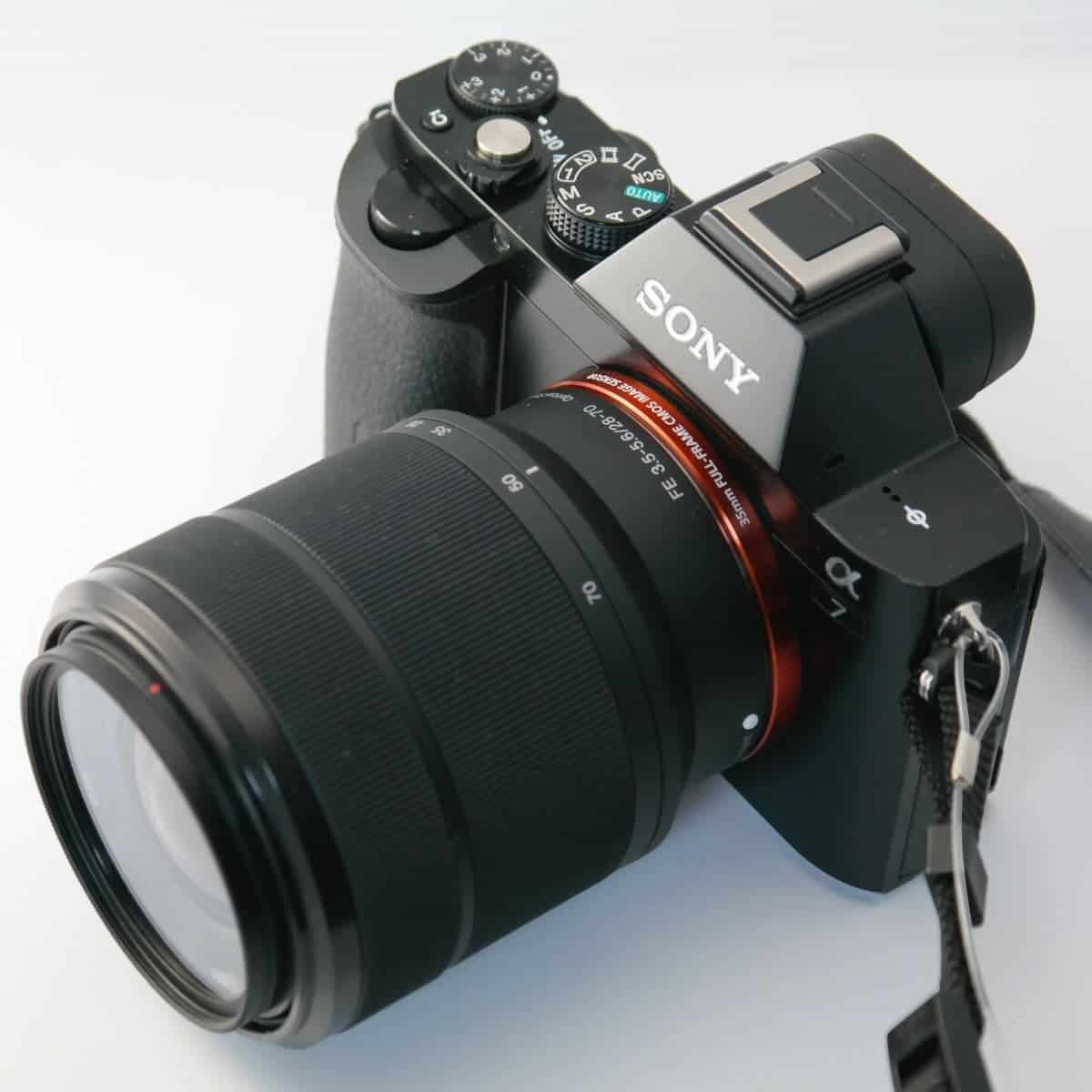
There are many styles of portrait photography, which means you can choose from a variety of lenses.
Choosing the right lens is important because it impacts how your portraits look, along with when and where you can shoot.
Related: Best camera brands in 2021
When you’re looking for a portrait lens for your Sony camera, decide whether you want a prime or zoom lens.
Both options work well for portraits. However, prime lenses generally offer larger maximum apertures, while zoom lenses provide more flexibility.
Related: Holy Trinity of Lenses: 3 Lenses Every Photographer Needs
Most portrait photographers prefer prime lenses, such as the classic 85mm. It provides a flattering perspective, and you can get one with a large maximum aperture, blurring the background.
Once you decide on the type of lens, there are other features to look for.
Related: Documentary photography: Tips for taking compelling photos
Image stabilization and autofocus are two features that’ll help you take better portraits. Both of them work to ensure your photos turn out sharp and in focus. While they aren’t required, they’re beneficial.
After you’ve figured out what you’re looking for in a portrait lens for your Sony camera, you’re ready to pick a brand.
Related: The best memory card readers in 2021
If price isn’t an issue and you want the overall best, Sony’s G Master and ZEISS lenses are incredible. Other brands, such as Sigma and Tamron, offer great lenses at lower prices.
The following are the best portrait lenses for your Sony camera.
1. Sony FE 35mm f/1.4 GM Lens
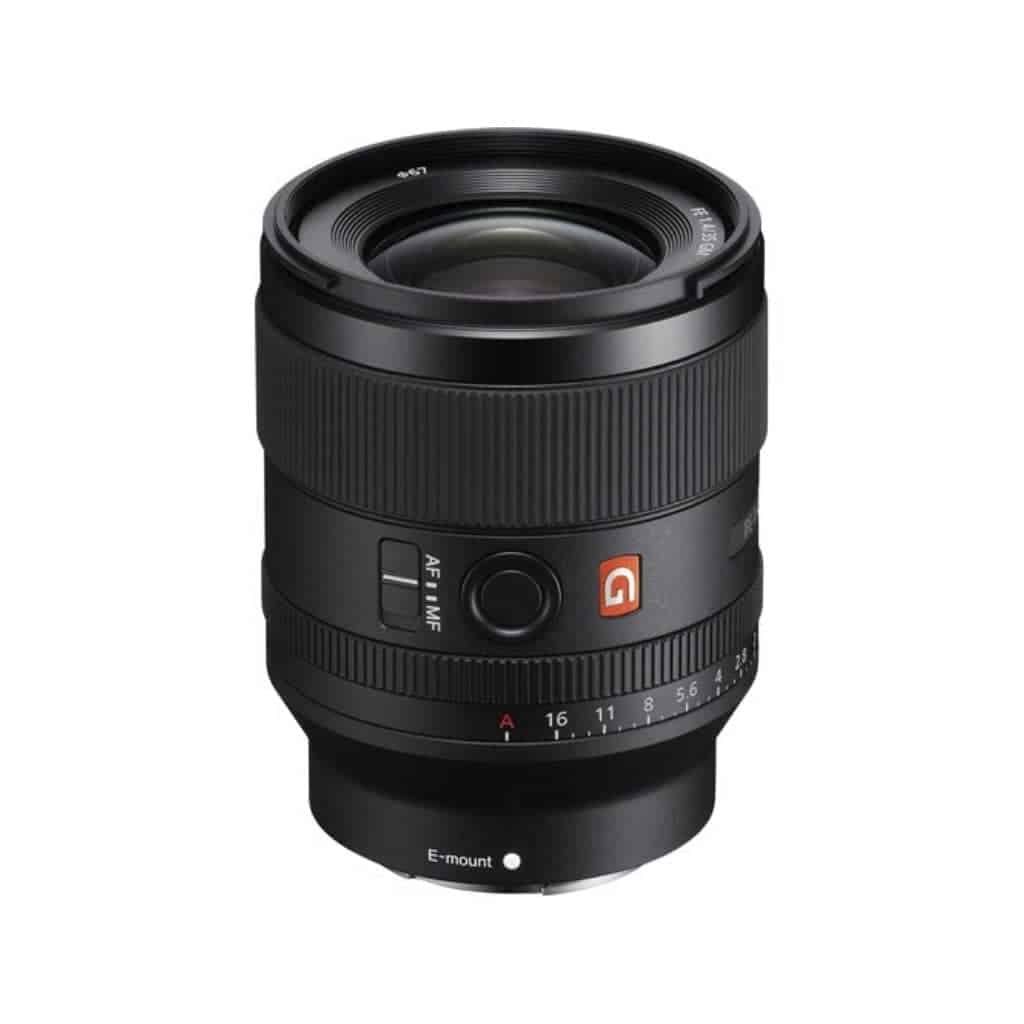
Key features for the Sony FE 35mm f/1.4 GM Lens are as follows:
- Aperture range: f/1.4 to f/16.
- Lens mount: Sony E.
- Format compatibility: APS-C and full-frame.
- Minimum focus distance: 9.8 inches.
- Autofocus: Yes.
- Image stabilization: No.
- Dimensions: 3.8 inches long and 3-inch diameter.
- Weight: 1.2 lb (524 g)
The 35mm prime lens is a wide-angle classic. Sony offers several options, but the G Master version is superb.
While it has a high price tag, the glass is built to produce incredible results. The main drawback is that it doesn’t have in-lens image stabilization.
It features a fast f/1.4 maximum aperture, which creates a beautiful blur, bokeh, and performs exceptionally in low-light.
Sony applied Nano AR Coating II to the 35mm G Master lens, which reduces flare and ghosting. In bright lighting conditions, you’ll still have contrast and accurate colors.
The 35mm angle of view is perfect for all types of portraits. Being wider, you can capture great full-body and street photos. It’s the perfect lens for capturing your subject along with the background.
If you have a crop sensor Sony camera, you can also try the Sony E 35mm f/1.8 OSS Lens. It’s an ideal budget pick. At $423 from B&H, it comes with a suite of benefits.
You get a large maximum aperture of f/1.8, autofocus, image stabilization, and a rounded seven-blade diaphragm for beautiful bokeh.
Related: How to shoot full-body portraits
2. Samyang AF 35mm f/1.8 FE Lens for Sony E
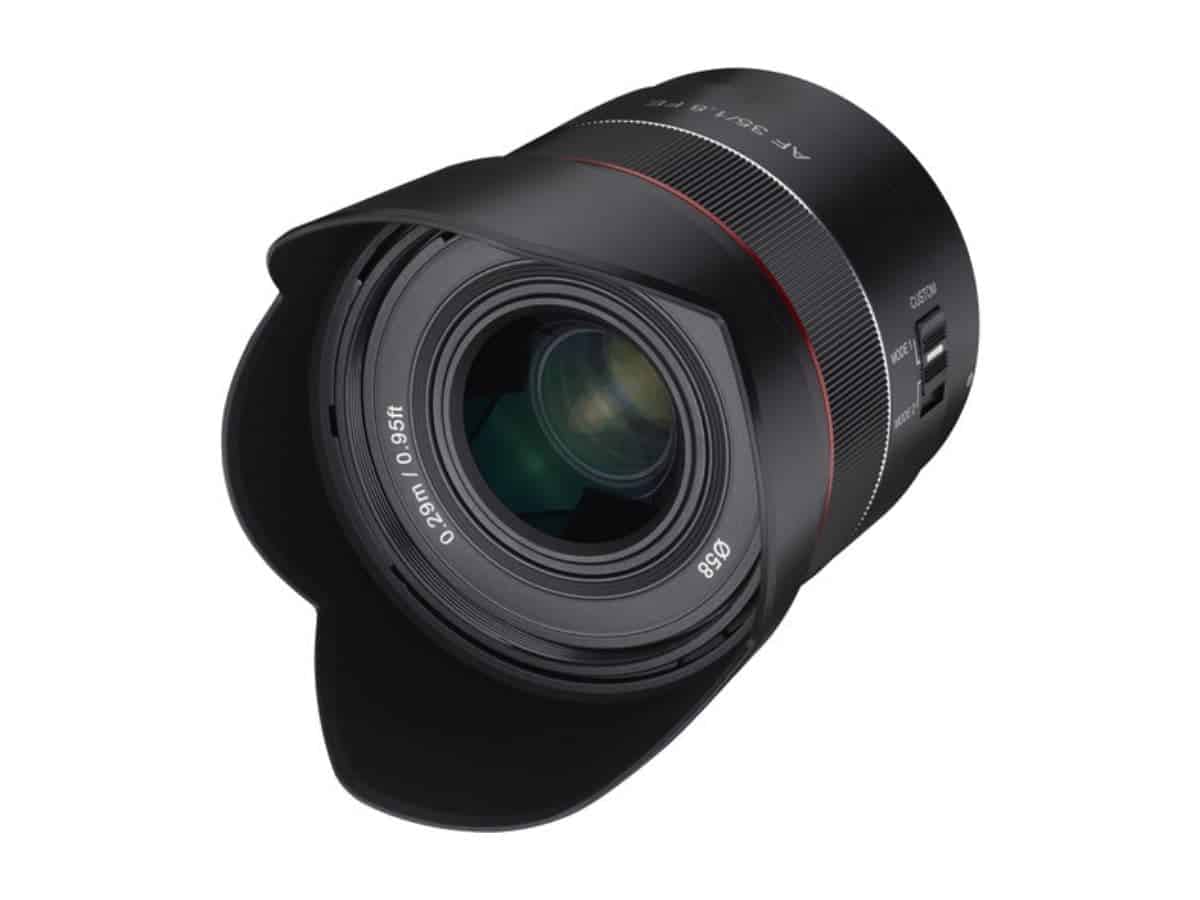
The following are key features for the Samyang AF 35mm f/1.8 FE Lens for Sony E:
- Aperture range: f/1.8 to f/22.
- Lens mount: Sony E.
- Format compatibility: APS-C and full-frame.
- Minimum focus distance: 1 foot.
- Autofocus: Yes.
- Image stabilization: No.
- Dimensions: 2.5 inches long and 2.6-inch diameter.
- Weight: 7.4 oz (210 g).
For about $1,000 less than the G Master lens, Samyang offers a well-performing 35mm lens with a maximum aperture of f/1.8.
It has a slightly smaller maximum aperture than the G Master, and it has a nine-blade diaphragm instead of eleven blades. For the price, it’s a great lens.
You can capture portraits with a blurry background, and also, at f/8, your portraits will be sharp corner to corner.
The autofocus also works well, as it quickly finds and focuses on your subject.
3. Sigma 50mm f/1.4 DG HSM Art Lens for Sony E
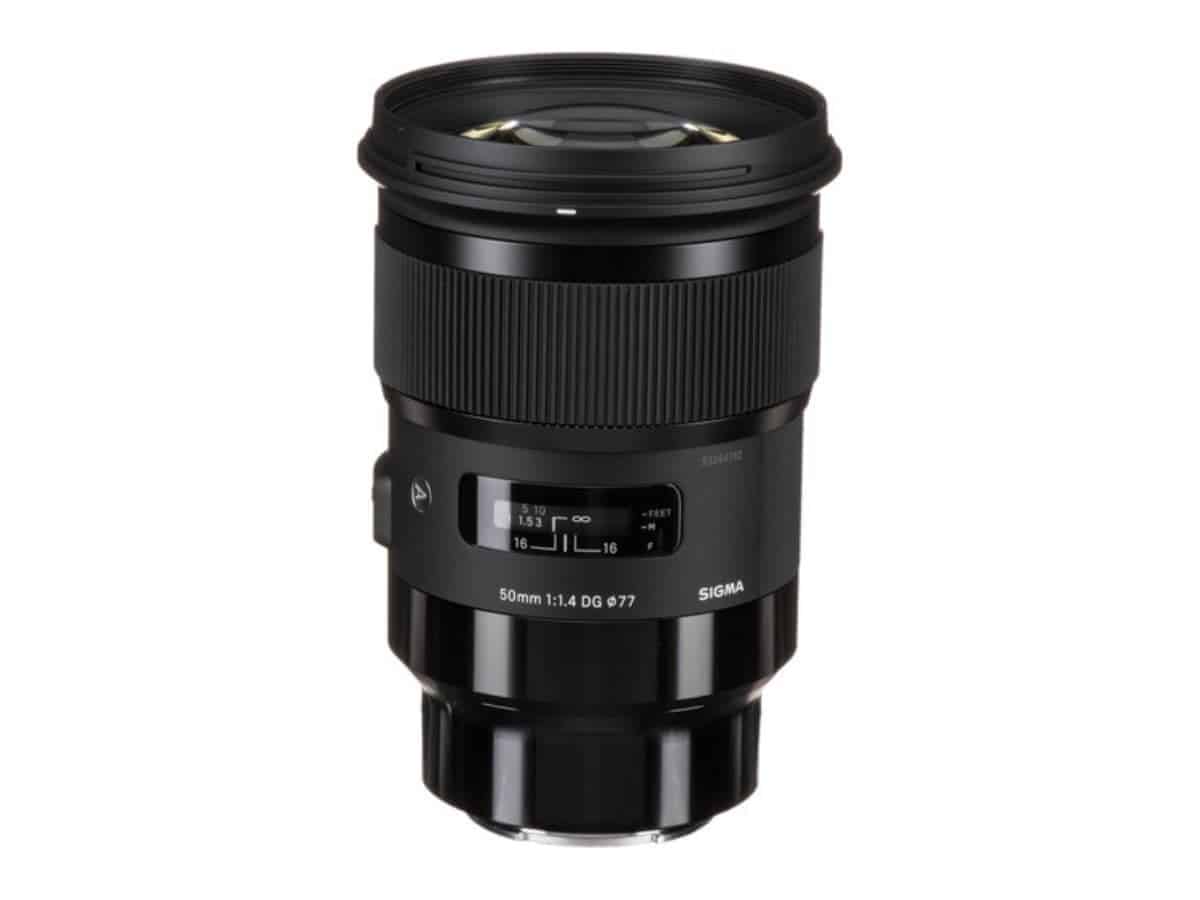
- Aperture range: f/1.4 to f/16.
- Lens mount: Sony E.
- Format compatibility: APS-C and full-frame.
- Minimum focus distance: 1.31 feet.
- Autofocus: Yes.
- Image stabilization: No.
- Dimensions: 3.93 inches long and 3.36-inch diameter.
- Weight: 1.79 lb (815 g).
Sigma Art lenses are incredible because they produce top-tier results at a lower price compared to G Master or ZEISS lenses.
It features 13 elements in 8 groups, along with a rounded 9-blade diaphragm that produces smooth bokeh in portraits using a shallow depth of field.
The Hyper Sonic Motor (HSM) also gives the lens a quick, smooth, and quiet autofocus performance.
The main drawbacks are that it doesn’t have image stabilization and the rubber seal only makes it resistant to dust and splashes instead of being weather-resistant.
Overall, it’s a valuable lens because it offers excellent quality at an attractive price point. If you have a bigger budget, go with the $1,998 Sony FE 50mm f/1.2 GM Lens. With a smaller budget, the $248 Sony FE 50mm f/1.8 Lens is a good alternative.
4. ZEISS Batis 85mm f/1.8 Lens for Sony E
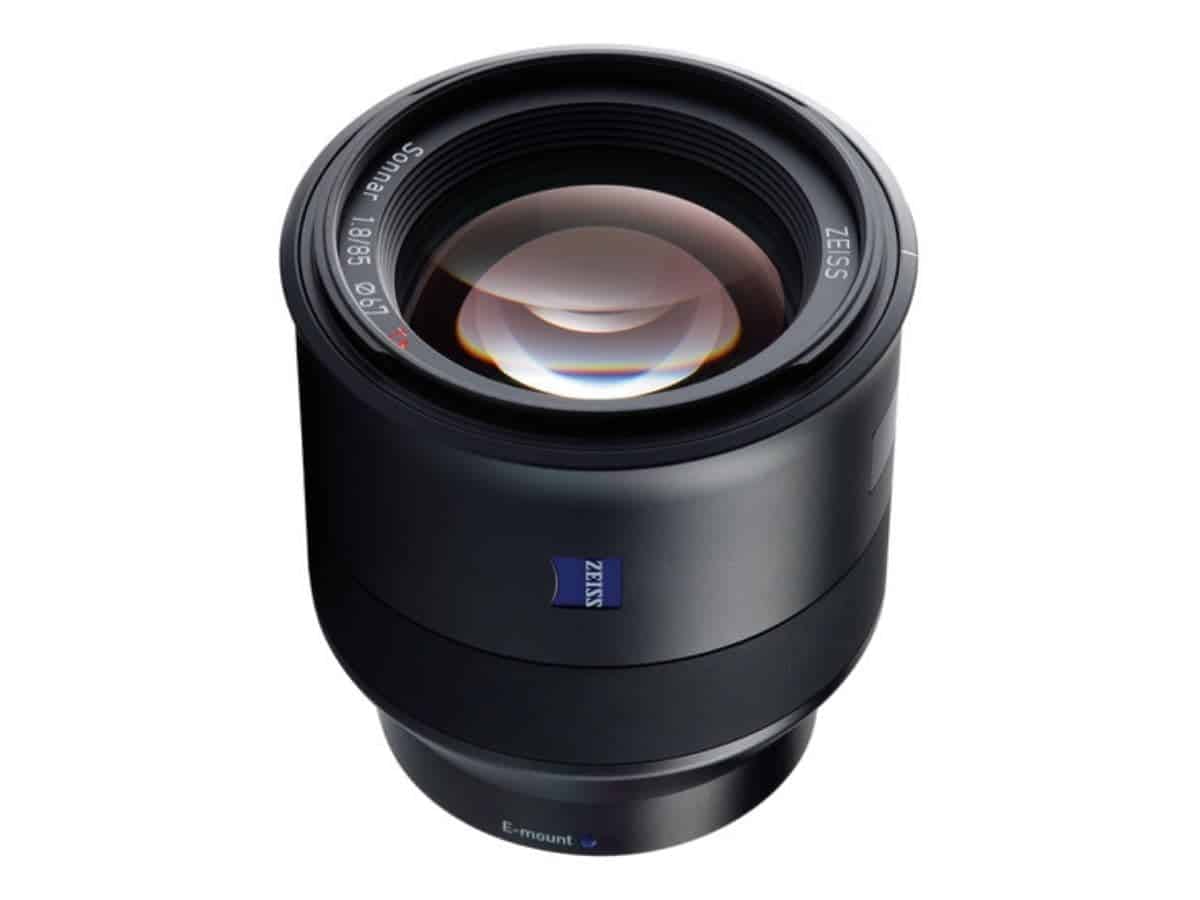
Key features for the ZEISS Batis 85mm f/1.8 Lens for Sony E are as follows:
- Aperture range: f/1.8 to f/22.
- Lens mount: Sony E.
- Format compatibility: APS-C and full-frame.
- Minimum focus distance: 2.62 feet.
- Autofocus: Yes.
- Image stabilization: Yes.
- Dimensions: 3.62 inches long and 3.62-inch diameter.
- Weight: 15.94 oz (452 g).
The 85mm prime lens is often regarded as the ultimate portrait lens. It’s due to the flattering perspective, elimination of distortion, separation from the background, and amazing results.
ZEISS takes it to the next level with the Batis 85mm f/1.8 Lens for Sony E.
The lens has 11 elements in 8 groups. Plus, it consistently produces sharp photos thanks to its autofocus performance and in-lens image stabilization.
If you want the most outstanding 85mm lens for your Sony camera, this is it.
5. Sony FE 85mm f/1.8 Lens
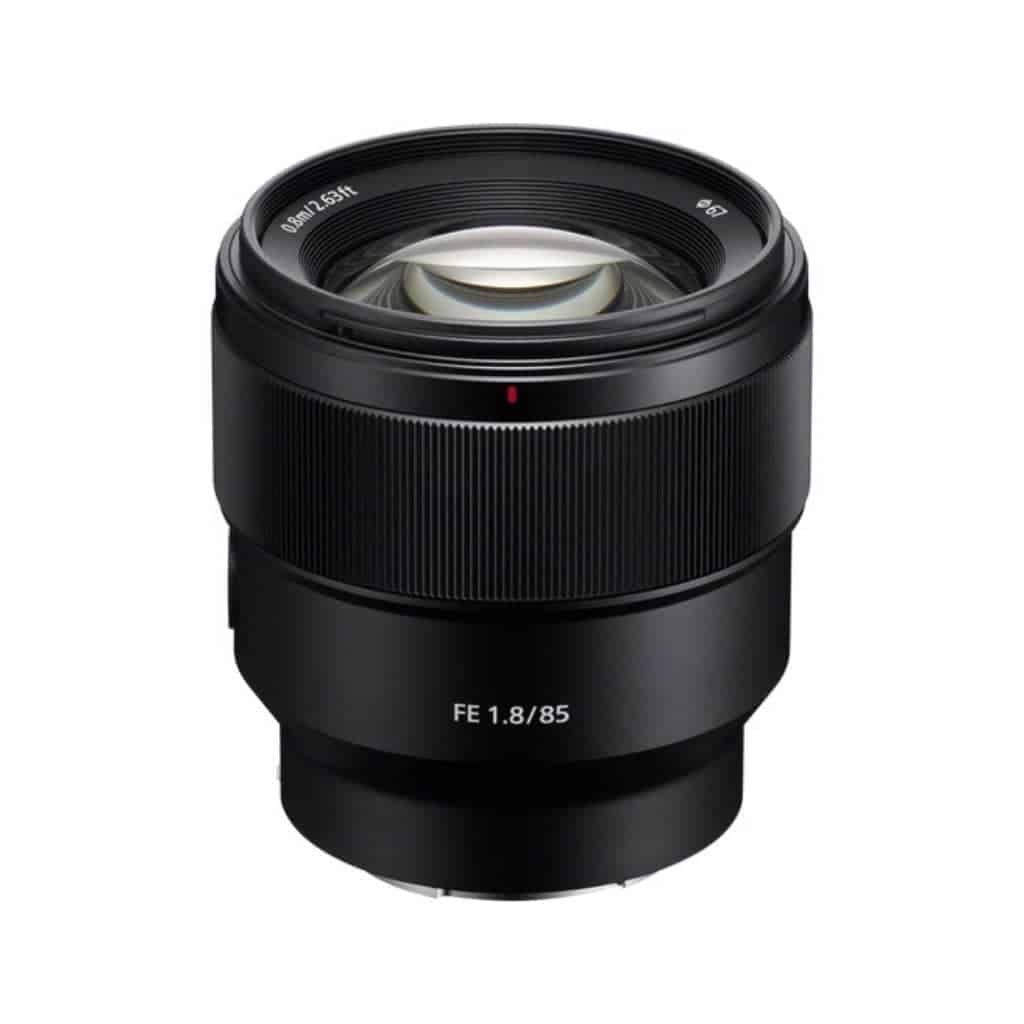
The following are key features for the Sony FE 85mm f/1.8 Lens:
- Aperture range: f/1.8 to f/22.
- Lens mount: Sony E.
- Format compatibility: APS-C and full-frame.
- Minimum focus distance: 2.62 feet.
- Autofocus: Yes.
- Image stabilization: No.
- Dimensions: 3.23 inches long and 3.07-inch diameter.
- Weight: 13.09 oz (371 g).
With 85mm being such a great focal length, lower-cost options are much needed. That’s where the Sony FE 85mm f/1.8 lens comes in.
It’s a small and portable lens that performs very well. Better than what you’d expect for being around $500.
The 85mm lens from Sony has 9 elements in 8 groups and 9 rounded diaphragm blades.
So, the portraits you take with Sony’s 85mm will have a nice blurry background when using a large aperture.
If you’re looking for a good lens with a tighter budget, this is an optimal choice.
6. Sony FE 100mm f/2.8 STF GM OSS Lens
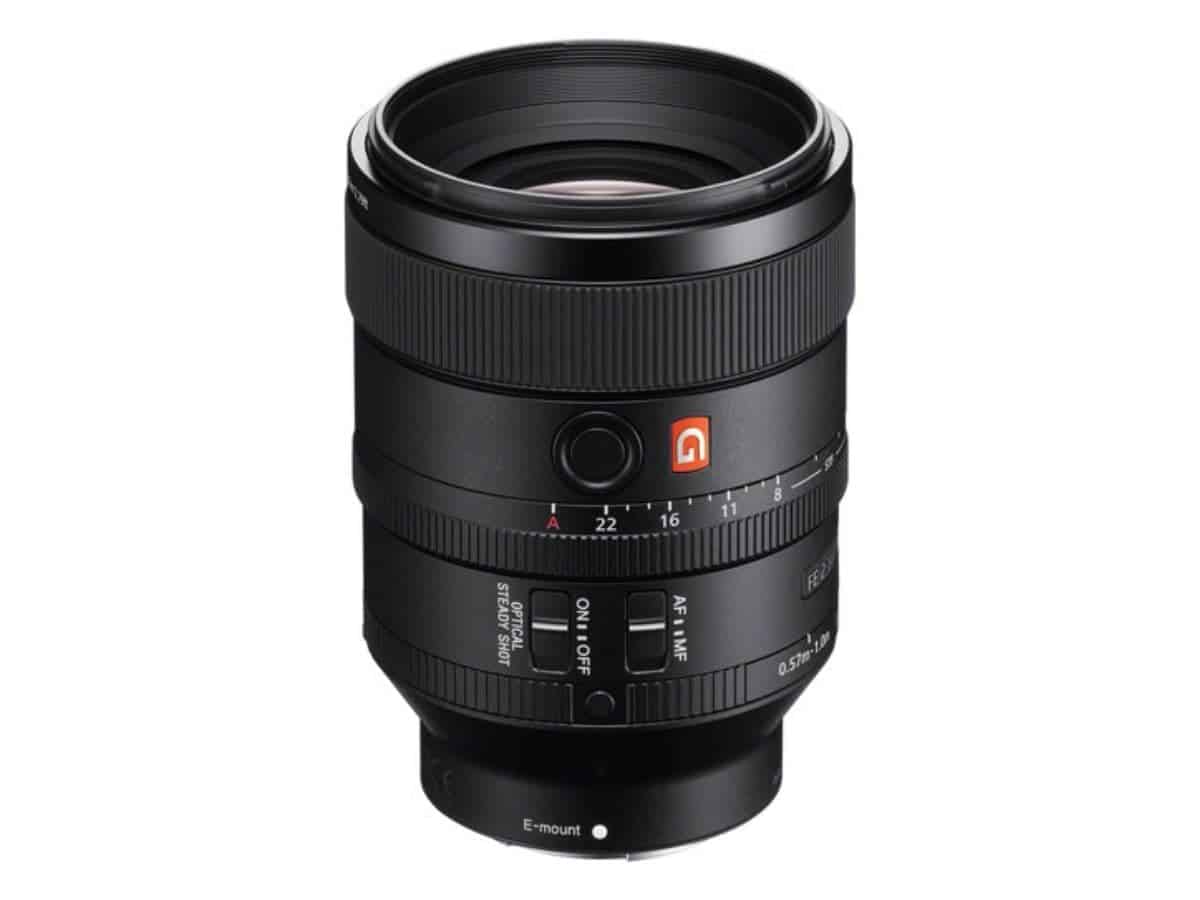
Key specs for the Sony FE 100mm f/2.8 STF GM OSS Lens are as follows:
- Aperture range: f/2.8 to f/20.
- Lens mount: Sony E.
- Format compatibility: APS-C and full-frame.
- Minimum focus distance: 1.87 feet.
- Autofocus: Yes.
- Image stabilization: Yes.
- Dimensions: 4.65 inches long and 3.35-inch diameter.
- Weight: 1.54 lb (700 g).
Sony’s 100mm f/2.8 lens is the older sibling of the 85mm lens. It’s an excellent lens for portrait photography because it offers stellar performance, separation, and compression.
Your portraits will be sharp and, when taken at the maximum aperture of f/2.8, there’ll be a beautiful blur.
The Sony 100mm lens features 14 elements in 10 groups, along with 11 rounded diaphragm blades.
It also has autofocus and image stabilization, which means it checks all of the boxes. With a lens this long, image stabilization is crucial.
The bottom line is that Sony’s 100mm lens is one of the best overall portrait lenses for Sony cameras.
7. Sony FE 135mm f/1.8 GM Lens
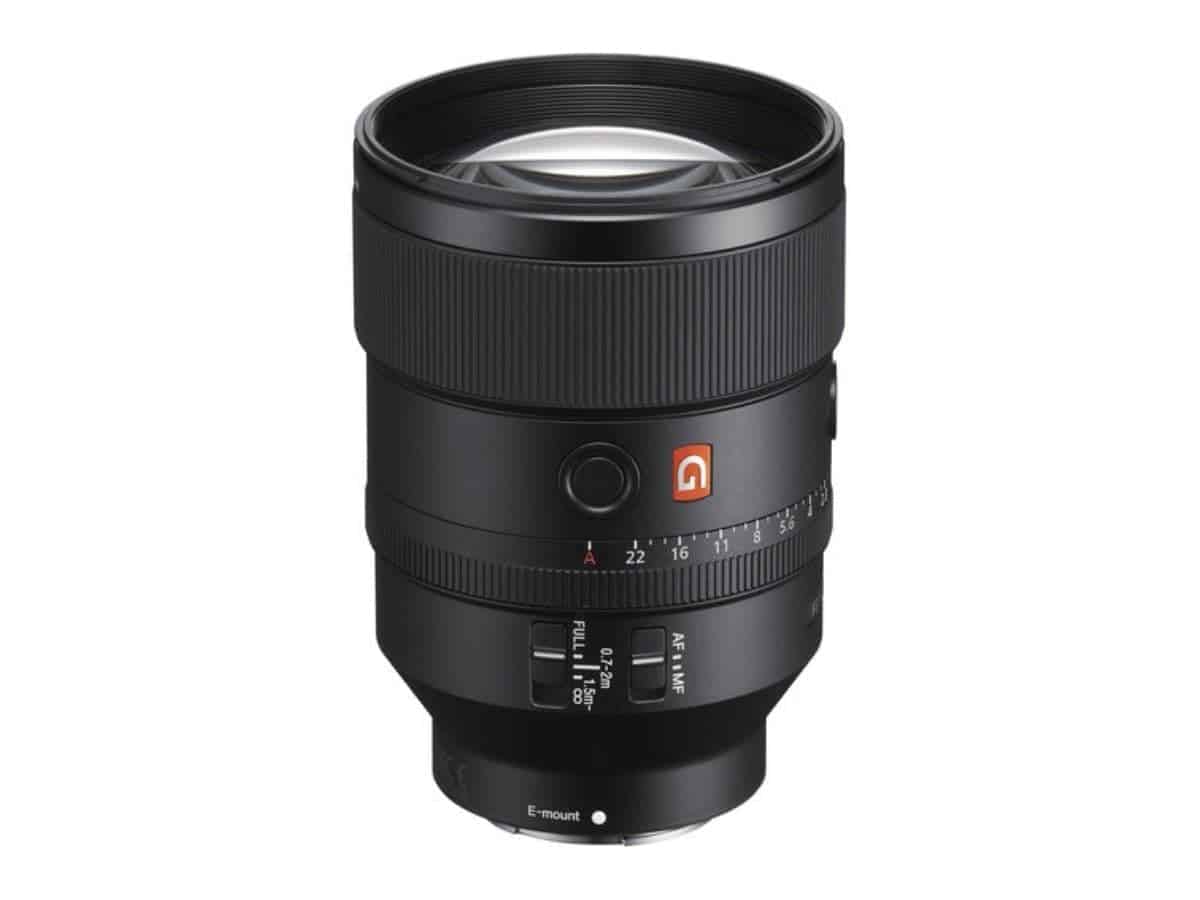
The following are key features for the Sony FE 135mm f/1.8 GM Lens:
- Aperture range: f/1.8 to f/22.
- Lens mount: Sony E.
- Format compatibility: APS-C and full-frame.
- Minimum focus distance: 2.3 feet.
- Autofocus: Yes.
- Image stabilization: No.
- Dimensions: 5 inches long and 3.52-inch diameter.
- Weight: 33.51 oz (950 g).
The Sony FE 135mm f/1.8 GM Lens may be one of the best lenses you’ll ever use. Its sharpness, speed, and build quality are impeccable.
As a portrait photographer, you’ll capture photos with excellent compression and bokeh. The autofocus is incredibly fast and accurate, which will make your photoshoots a breeze.
It doesn’t have image stabilization, but it has plenty of benefits that outweigh the one con, including 13 elements in 10 groups and 11 rounded diaphragm blades.
Sony’s 135mm f/1.8 is also excellent in low-light situations. So, you can shoot any time of the day and capture great portraits.
Being over $2,000, it’s a relatively expensive lens. However, the flattering perspective, compression, and extra length make it versatile and worth it.
8. Tamron 28-75mm f/2.8 Di III RXD Lens for Sony E
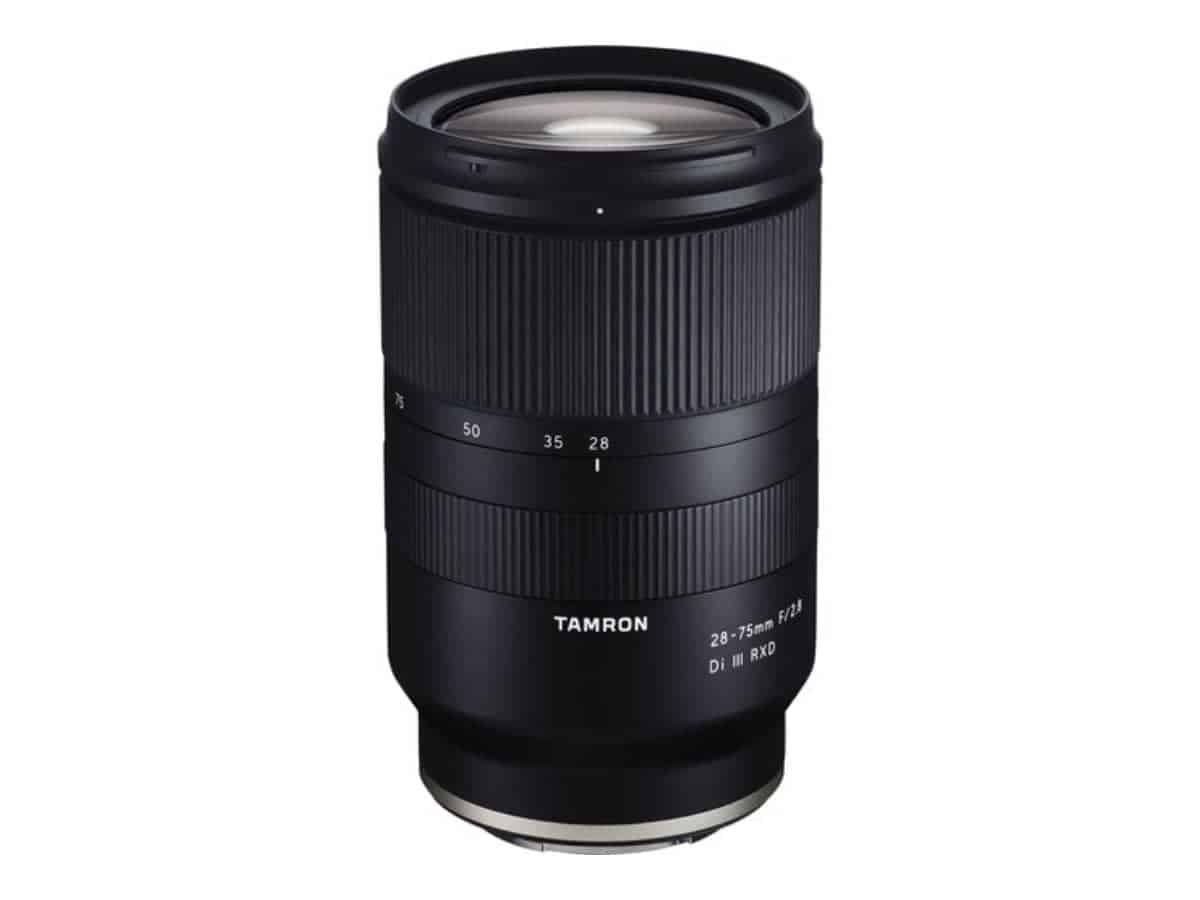
- Aperture range: f/2.8 to f/22.
- Lens mount: Sony E.
- Format compatibility: APS-C and full-frame.
- Minimum focus distance: 7.48 inches.
- Autofocus: Yes.
- Image stabilization: No.
- Dimensions: 4.64 inches long and 2.87-inch diameter.
- Weight: 1.21 lb (550 g).
While prime lenses are favored among portrait photographers, zoom lenses are worth considering due to their versatility. One of the most popular zoom lenses is the 24-70mm.
Tamron offers a slightly different one, as the focal lengths range from 28-75mm. Plus, it has a constant maximum aperture of f/2.8.
The Tamron lens has 15 elements in 12 groups and 9 rounded diaphragm blades.
At the wide end, you can capture lifestyle and full-body portraits. Then, you can zoom in to 75mm and capture close-up portraits.
If you’re traveling and can only bring one lens for portrait photoshoots, this is the go-to lens. It’s sharp, fast, accurate, and costs less than $1,000. You’ll be extremely happy with the results and versatility.
9. Sony FE 70-200mm f/2.8 GM OSS II Lens
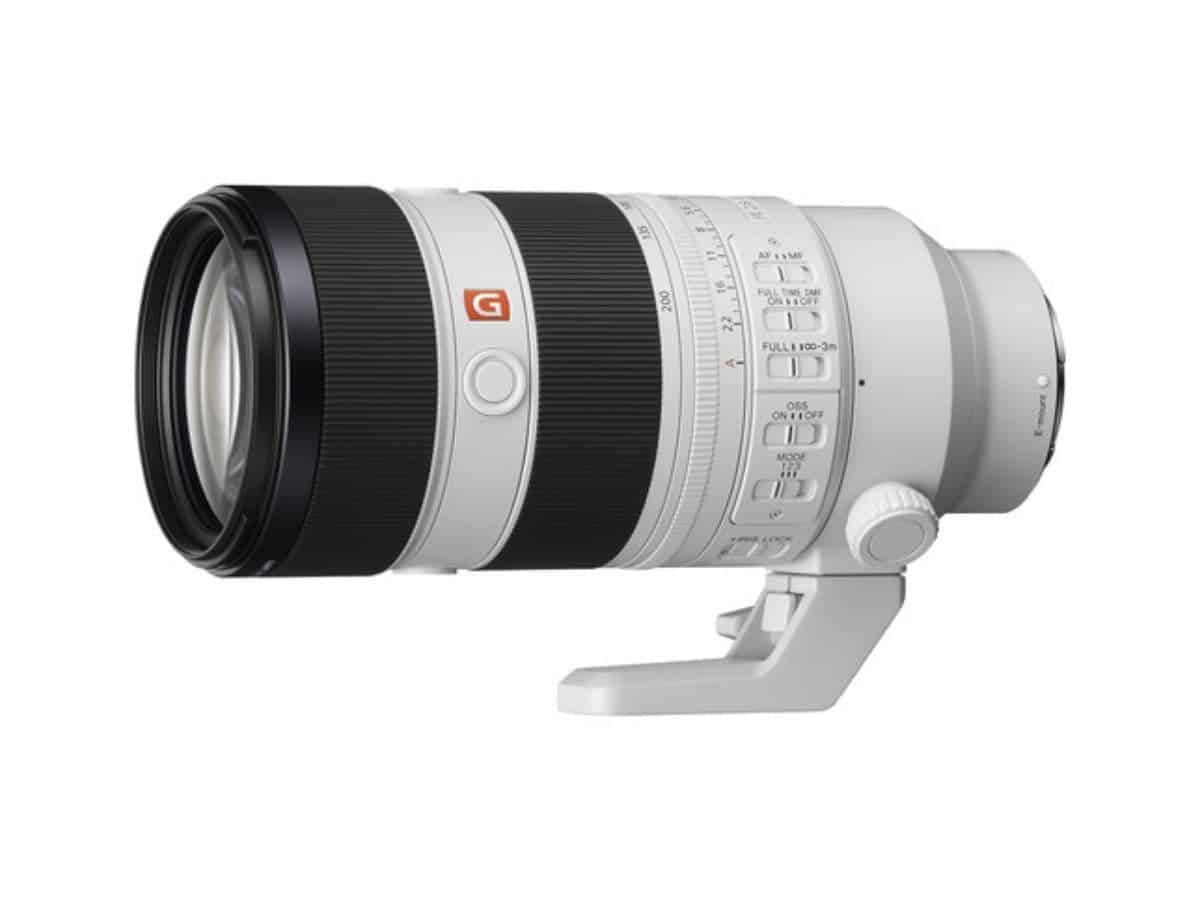
- Aperture range: f/2.8 to f/22.
- Lens mount: Sony E.
- Format compatibility: APS-C and full-frame.
- Minimum focus distance: 15.7 inches.
- Autofocus: Yes.
- Image stabilization: Yes.
- Dimensions: 7.87 inches long and 3.46-inch diameter.
- Weight: 2.3 lb (1,045 g).
Sony’s FE 70-200mm f/2.8 GM OSS Lens is incredible. However, Sony enhanced it with a second version, the Mark II.
At 2.3 pounds, it’s 29% lighter. Also, the second version has an autofocus performance that’s four times faster.
The 70-200mm lens is excellent for portraits because it gives you a wide range of long focal lengths with a constant maximum aperture of f/2.8.
Now, it’s not for everyone. If you’re getting your first lens for your Sony camera and want a zoom lens, go with the 24-70mm or 28-75mm lens.
A 70-200mm requires a lot of space. So, it’s not the most practical. If you’re looking for a secondary lens, it’s a fantastic choice.
Sony’s 70-200mm has 17 elements in 14 groups. Plus, 11 rounded diaphragm blades. It also features top-notch autofocus performance and image stabilization.
10. Tamron 35-150mm f/2-2.8 Di III VXD Lens for Sony E
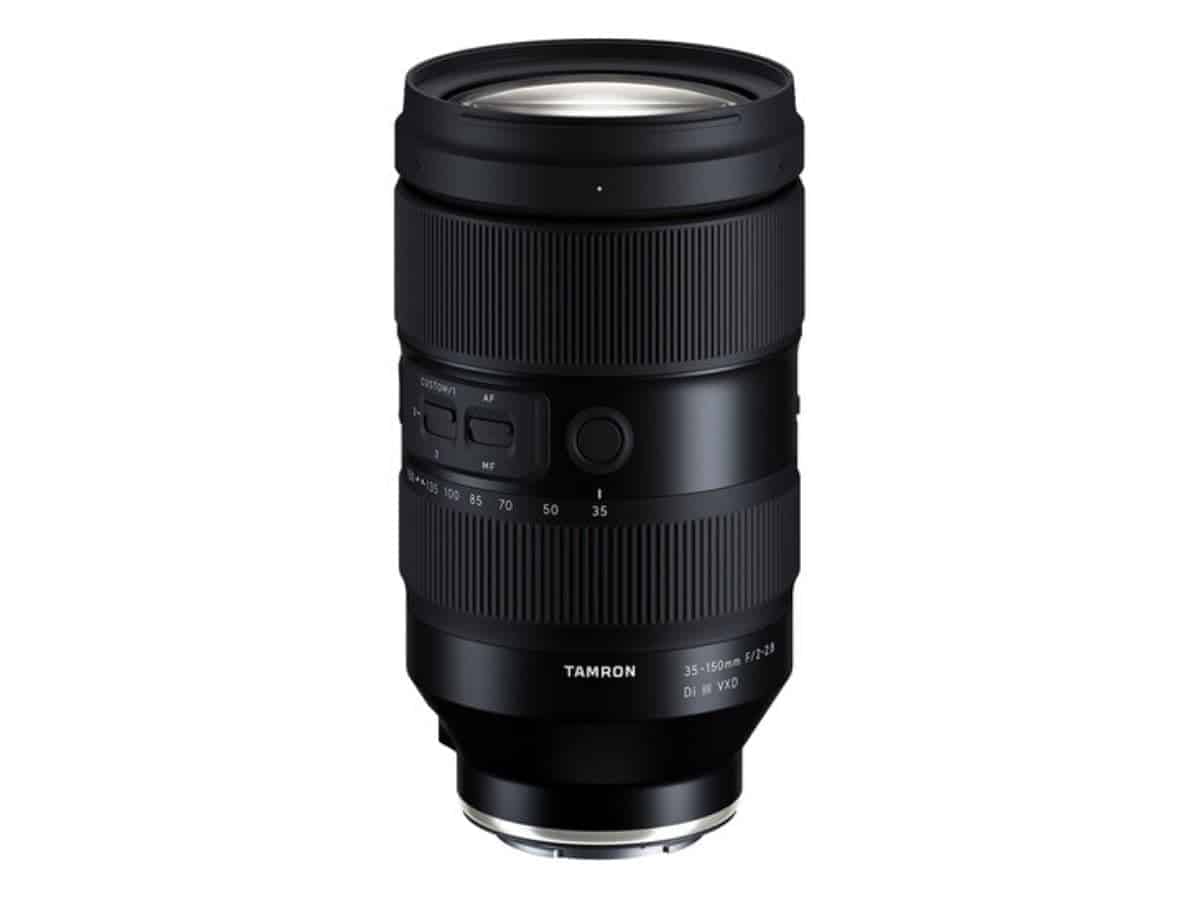
- Aperture range: f/2 to f/22.
- Lens mount: Sony E.
- Format compatibility: APS-C and full-frame.
- Minimum focus distance: 13 inches (wide) to 33.5 inches (tele).
- Autofocus: Yes.
- Image stabilization: No.
- Dimensions: 6.2 inches long and 3.51-inch diameter.
- Weight: 41.1 oz (1,165g).
The 35-150mm lens from Tamron is the perfect middle-ground between the 24-70mm and the 70-200mm.
At the wide angle of 35mm, the maximum aperture is f/2, and at 150mm, it’s f/2.8.
The wide to medium-telephoto range makes the Tamron lens extremely versatile. You can capture close-up portraits or full-body photos.
It also features 21 elements in 15 groups. Additionally, it has 9 rounded diaphragm blades. Your portraits taken with a large aperture will have smooth-edged bokeh in the background.
The main drawbacks are that it doesn’t have image stabilization and isn’t weather-sealed.
Other than that, you’ll get your money’s worth due to its versatility, along with the sharp and crisp photos.
Frequently asked questions
Does every Sony lens fit every Sony camera?
Sony makes A-mount and E-mount lenses. So, make sure you get the right lens for your camera. You can also get an A-mount to E-mount adapter to use A-mount lenses on an E-mount camera body.
What’s the difference between Sony FE and E lenses?
As long as you have an E-mount Sony camera, you can use Sony FE and E lenses. FE lenses are made for full-frame cameras, while E lenses are made for crop sensor (APS-C) cameras.
Will Sony FE lenses work on Sony a6000 series cameras?
Yes, Sony FE lenses will work on the a6000, a6100, a6300, a6400, a6500, and a6600. Since the a6000 series cameras have a crop sensor, it’ll magnify the focal length by 1.5 times. So, a 50mm FE lens will be equivalent to a 75mm lens.
Featured image courtesy of Canva.

